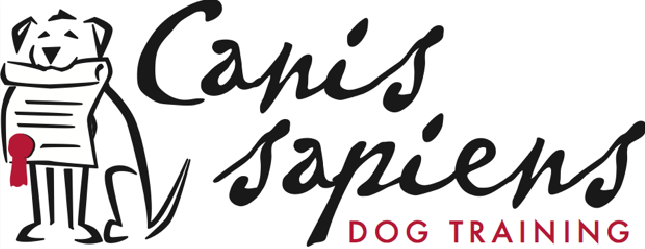MANAGEMENT DEVICES
We call these products management equipment, as opposed to "training" equipment, because we believe "training equipment" is a misnomer. There is no such thing as a "dog training collar." No equipment is going to teach your dog anything, you are. With that in mind, the products below can help you manage your dog while you train her.
HARNESSES
Regular Harness - This harness connects to leash on top of dog's back. This is often the best choice for both small dogs and large dogs especially if your dog coughs after pulling hard on the leash.
Easy-Walk Harness - This has a martingale closure that tightens across the dog's chest when he pulls.We do not recommend using this or any other aversive device (choke collar, prong collar, shock collar, gentle leader) if your dog is barking and lunging at other dogs and/or people because some dogs connect the pain they feel due to the device with seeing other dogs or people. Also check your dog's armpits regularly to make sure they haven't developed sores from this halter.
COLLARS
Ideally, a well-trained dog walks nicely on a loose leash and is perfectly under control in a simple buckle collar. In real life some handlers will always feel more comfortable handling their dog on some sort of "training" equipment as described above. Neck collars do not give a handler a lot of control and tend to trigger the dog's oppositional reflex.
Premier Martingale - These tighten around the dog's neck to prevent escape. Fitted correctly the two D-rings touch at behind the dog's ears when fully tightened. Fitted any tighter than that - which we do not recommend - the collar becomes an aversive device, working basically like a choke collar.
Old-fashioned buckle collars - These are the classic, belt-buckle style collars. If you like your dog to always wear her collar, these are fine. They come in a variety of materials, colors and styles. They also come in rolled shapes to protect your dog's coat. Be aware of dyed leather which can stain your dog's coat. If your dog spends time in the water, you probably want a collar made of nylon or other synthetic, quick drying material.
LEASHES
Leashes for everyday walking and training should be 10 to 15 feet long and made of a material that is gentle on your hands. The more expensive cotton long lines are gentler on your hands than the cheaper ones but care must still be taken not to let a long line run through your hands or you will get a rope burn. For active dogs, you may consider a faster-drying material such as nylon but nylon is harder on your hands. Look for sturdy materials and hardware that is appropriate for your dog's size. Inspect your leash and your hardware often for safety and replace when necessary. Never use leashes made of chain: they are hard on your hands and unsafe, as they do not give you a lot of control.
CRATES AND X-PENS
Crates can be misused. No puppy or dog should spend most of the day locked in a crate and you don't need to use one for housetraining (see our Health and Training Tips section) but I think it is a good skill for a dog to have. Here is where the skill comes in handy:
1. someone comes over to your house that is terrified of dogs- you can crate your dog and still have your dog in the same room with you
2. you travel and stay at a house with other pets that your dog doesn't know... you can crate your dog and take the dog along instead of leaving him at home or at a kennel
3. you decide to start taking some dog sport for fun, if your dog is comfortable in a crate and you attend a fun trial or even start competing, it will be much easier for your dog
4. your dog has to stay overnight at the vet, this is easier for your dog if they are crate trained
5. you decide to get a second dog and you want to bring them both to a class at the same time and work one at a time
6. you decide to go to a dog training seminar with your dog
7. if you use a crate daily, it will be available in an emergency and you can have someone watch your dog in a crate (much safer) rather than handing off your dog on a leash while you go get the rest of the animals
Lots of dogs love crates and choose to spend time in their open door crates. A crate should be big enough for your dog to stand up, turn around and lie down comfortably. Buy a good quality crate in a size that will fit your puppy when fully grown. We recommend investing in a sturdy metal folding crate, the cheap non-folding ones do not hold up to travel very well and once you take them apart they don't always fit back together. Precision and Midwest are some good brands.
An x-pen can be useful in the yard and in dog shows. Don't leave your dog alone in one if she's a jumper.
Soft crates and tents are light and excellent for shows, travel and camping. These are for dogs who are fully crate trained and do not chew. Here are some crate training links,link1, link2
